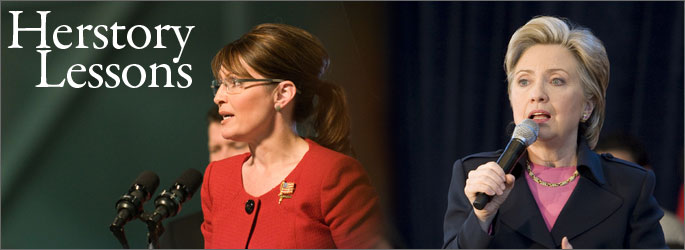The near success of Sen. Hillary Clinton and Alaska Gov. Sarah Palin in the electoral battles of 2008 made it an important year for women involved in politics.
However, even before the 2008 landmark races in which Clinton fought to the end to wrest her party’s nomination and Palin campaigned as the Republican vice presidential running mate to Sen. John McCain, other women have blazed trails in the struggle to gain electoral representation. The growing involvement of UMBC alumnae in politics is indeed reflective of the national trend.
Some of these events have been seminal, like Rep. Shirley Chisholm’s gutsy but unsuccessful 1972 quest for the Democratic Party nomination for president. Chisholm was the first woman (and African-American) to do so, and she won the support of 152 delegates at the convention in Miami. Chisholm’s campaign slogan was “unbought and unbossed,” and the representative from New York state also has the distinction of being the first African-American woman elected to the U. S. Congress.
A decade later, Rep. Geraldine Ferarro was selected in 1984 by Walter Mondale as his Democratic vice presidential running mate. As the first woman on a national major party ticket, Ferraro’s place on the ticket and her hard-hitting campaign against the popular and incumbent Ronald Reagan were historic. Her debate against George H.W. Bush, Reagan’s vice-presidential running mate, was the first time that a female candidate competed in that forum.
On the heels of Ferraro’s efforts, Rep. Patricia Schroeder put out feelers and seriously considered a run for the 1988 Democratic presidential nomination. However, after a few months on the campaign trail in 1987, the Colorado congresswoman decided not to run. She cited as reasons her late organizational and fund-raising start and a crowded field of announced candidates.
However, without a doubt, 2008 was the most inspiring harbinger of things to come.
First was the hard-fought battle of Hillary Clinton for the Democratic Party nomination; she won over 18 million votes in the Democratic primaries in her contest with now-President Barack Obama. Second, Republican John McCain’s selection of Gov. Sarah Palin as his running mate marked only the second time that a woman was chosen by one of the two major political parties as a vice presidential running mate.
It does not diminish the importance of the landmarks set by Clinton and Palin to acknowledge a larger and more important phenomenon: the gradual increase over several decades in the number of women officeholders at all levels. The initial concentration of women elected to local school boards and to city and county councils has progressed to a wide diffusion and possession of higher elective offices.
This surge has occurred, in part, because election to lower-level offices has increased the viable female candidate pool, and thus paved the way for higher-level success. The political and financial advocacy of organizations like EMILY’s List (founded in 1985) also has contributed to electoral victories by female candidates.
This progression has resulted in dramatic increases in the number of female governors, congresspersons, and state legislators over time. A 2008 snapshot in time is revealing. Sixteen women served in the U. S. Senate and seventy-one served in the House of Representatives. Seventy-four women held statewide elective executive positions, including eight governorships and ten lieutenant governorships. Twenty-four percent of state legislative seats were held by women.
Tags: Winter 2009

